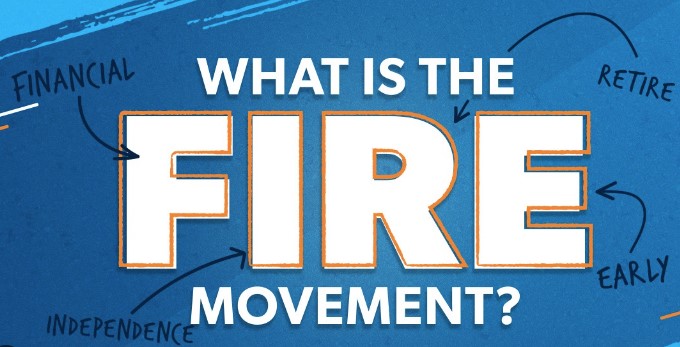It’s a crisp Monday morning in the heart of Manhattan. While the city hustles and bustles, Sarah, a 35-year-old former marketing executive, sips her coffee overlooking Central Park from her apartment balcony. Instead of dashing to the subway for a 9 AM meeting, she’s planning her next travel adventure to South America. Sarah isn’t on vacation—she’s achieved Financial Independence and Retired Early, embracing the FIRE lifestyle.
That’s the dream many are chasing: breaking free from the traditional work cycle to live life on their own terms. But what exactly is FIRE, and how can you turn this dream into your reality?
What Is Financial Independence/Retire Early (FIRE)?
Financial Independence/Retire Early (FIRE) is a movement that encourages living frugally, saving aggressively, and investing wisely to achieve financial freedom at a younger age than traditional retirement plans allow.
By accumulating enough wealth to cover living expenses indefinitely, individuals can choose to retire from their conventional jobs and pursue passions without financial constraints.
The Spark Behind the FIRE Movement
The 2008 financial crisis left many questioning the stability of traditional employment and retirement plans. Like Sarah, who witnessed colleagues lose jobs and retirement savings, people began seeking alternative financial strategies.
The FIRE movement gained momentum as blogs, podcasts, and forums shared success stories and practical advice on achieving financial independence through unconventional means.
What Does FIRE Mean for You?
Imagine having the freedom to decide how you spend each day without worrying about paychecks or bills. FIRE isn’t just about quitting your job; it’s about gaining control over your time and making choices that align with your values and passions.
How to Ignite Your Path to FIRE
1. Assess Your Financial Health
Start by evaluating your current financial situation. Calculate your net worth by subtracting liabilities from assets. Track your income and expenses meticulously to identify spending patterns. This clarity is crucial for setting realistic goals.
2. Define Your FIRE Number
Your FIRE number is the amount of money you need invested to live off the returns comfortably. A common guideline is the 4% rule: multiply your annual living expenses by 25. If you need $40,000 a year, your FIRE number would be $1 million.
3. Embrace Frugality
Cutting unnecessary expenses accelerates your journey to FIRE. Sarah swapped dining out for cooking at home, canceled unused subscriptions, and opted for public transportation over owning a car. Small sacrifices add up significantly over time.
4. Boost Your Income
Consider side hustles or freelance work to increase your earnings. Whether it’s consulting, blogging, or selling handmade crafts, additional income streams can bolster your savings rate.
5. Invest Wisely
Investing is the engine that drives the FIRE movement. Diversify your portfolio with a mix of stocks, bonds, and real estate. Low-cost index funds are popular among FIRE enthusiasts for their steady growth and minimal fees.
6. Stay Disciplined and Informed
Consistency is key. Regularly review your financial plan and adjust as needed. Stay informed about economic trends and investment opportunities to make educated decisions.
Should You Pursue FIRE?
FIRE isn’t a one-size-fits-all solution. It requires commitment, discipline, and sometimes significant lifestyle changes. Consider your personal goals, financial obligations, and willingness to adapt. Consult with a financial advisor to tailor a plan that suits your unique circumstances.
The Potential Pitfalls of FIRE
- Lifestyle Sacrifices: Extreme frugality can affect your quality of life and relationships.
- Market Volatility: Economic downturns can impact your investments and delay your plans.
- Healthcare Costs: Early retirees need to plan for health insurance without employer benefits.
- Purpose and Fulfillment: Without a traditional job, some struggle to find purpose daily.
The Bottom Line
Financial Independence/Retire Early is more than a financial strategy; it’s a lifestyle choice that prioritizes freedom and personal fulfillment over conventional career paths. Like Sarah, who now spends her time traveling and volunteering, achieving FIRE can open doors to experiences and opportunities that a typical 9-to-5 job might not allow.
Take the First Step
If the idea of designing your life without financial constraints resonates with you, consider exploring the FIRE movement further. Start by implementing small changes—track your spending, set a savings goal, or pick up a side gig. Each step brings you closer to financial freedom.
Remember, FIRE is a marathon, not a sprint. With determination and smart planning, you can light the path toward a future where you call the shots.
